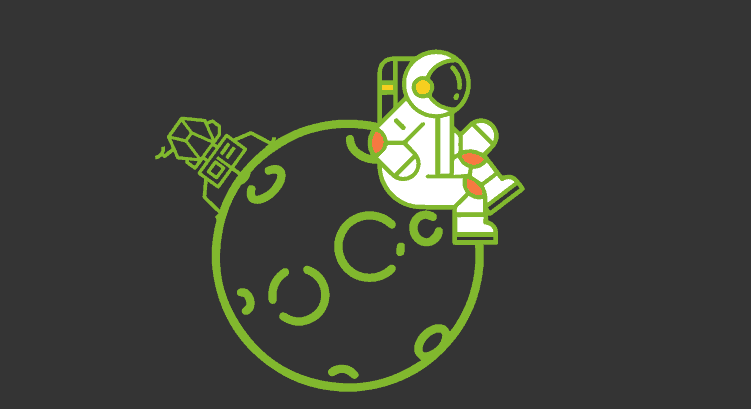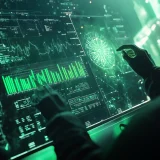How to reach the moon: computer science that made our dream possible
For ages, human beings have wondered ‘how could we reach the moon?’.
Earlier in prehistoric times, our ancestors watched said satellite filled with curiosity and admiration. Over the centuries and in multiple cultures, people thought the moon was divine, and it was worshipped and even feared. However, later in the 20th century, science and technology had been developed to the point where they were able to dare take the next step: reaching the moon with their own hands.
If we take a look back and think about the resources people counted on back in time, we would surely be surprised. In 1969, the year where the first Moon landing took place, most of the technology that we use nowadays had not been developed yet, or it was still in its early stages. There is no doubt that this gives the achievement and the astronauts, who went into space to fulfil the wishes of the whole species, their well deserved credit.
Indeed, the objective was achieved. But, how did they make it to the moon? What was the technology that allowed them to set foot on our satellite? And particularly, which was the computer science when we tried to reach the moon? Let’s go back in time.
Computer science that took us to the moon and back
Mankind’s dream to reach the moon took place on the 20th July 1969, thanks to the Apollo 11 mission. Before this one, there had been nothing less than 10 other missions (only 3 of them were manned) which had opened the way to this epic journey, in which astronauts Neil Armstrong, Mike Collins and Buzz Aldrin took part.
The technology involved in all those trips, and especially that of July, when the question on how to reach the moon was finally solved, represented the greatest achievement that human beings were able to accomplish at the time. Gathering the aquired knowledge in multiple disciplines throughout centuries of study made possible for us to go to a mysterious and unusual place, which had been impossible for our ancestors to reach.
What some people may ignore is how important computing when we had to reach the moon. It is true that, at the time, computing was still in its early stages, but it already showed us how truly powerful it was.
By then, hardware classics like IBM were showing up. In fact, in Goddard Space Flight Center, Maryland, and Manned Spacecraft Center, Houston, the places from where the mission was directed, mainframe IBM System/360 model 75 was used.
On the other hand, Spacecraft Apollo already counted on legendary Apollo Guiding Computer, designed by MIT and built by Raytheon, which was another remarkable milestone at the time, particularly in terms of miniaturization (its measures were 12.5 x 24 inches and it weighed over 70 pounds, while computers took up whole rooms at that time).
Its power will surprise you: a processing speed of 1 Mhz, a storage capacity of 36,864 words of 14 bits and a RAM of 2,048 words. All of these parameters are way below those of a current smartphone. Let us take the whole picture: its RAM was 1,600,000 times smaller than that of an ordinary 8 Gb RAM computer! And still, it was able to lead the ship and its modules to reach the lunar surface.
Now let’s talk about its software. The program used was named Luminary, and it was written in MAC language (MIT Algebraic Compiler).
Its development also became a turning point at the time. It involved a total of 300 people working during nothing less than 7 years. It consisted of a series of punch cards (that is right, punch cards!) and played a vital role throughout the whole mission, and especially during the Moon landing phase. The operating system was able to multitask (another great achievement for that time), although it was not simultaneous, but successive.
However, to put it mildly, its usability did not have much to do with that of our current programs. The orders consisted of complicated number and word combinations that astronauts uttered aloud so that the mission could be monitored from Earth.
Errors 1201 and 1202
Despite all efforts, the computer science that took us to the moon, much like the present one, did not lack errors. One of the most striking ones took place on landing, shortly before Neil Armstrong said his well-known quote: “That’s one small step for a man…”
In those critical moments, two error messages (1201 and 1202) were sent by the ship’s computer. Apparently, Buzz Aldrin had left two radars swiched on at the same time (one of them for Moon landing and the other one to control the position of the moon landing module regarding the command module), which was unplanned and caused a system data overload.
Nevertheless, the problem was solved thanks to the mission’s previous training. A few days earlier, in one of the many simulations that had been carried out, the same errors had ocurred and it was concluded that they were not reason enough to call the moon landing off. On the contrary, by means of these errors what the on-board computer was warning was that, given the data overload, instructions were being prioritized so that the mission’s critical operations could be executed.
The computer science involved in an achievement like when humans achieved to reach the Moon represents an example of Information sciences’ potential. They have been developed in such a way that, during the following decades, they have transformed our world and continue doing it every day.
Of course, as it has been proved, even on the Moon, computer systems cannot get rid of some errors!
But you are lucky, beacuse now you can count on tools such as monitoring systems that allow you to monitor the performance of your IT, so that you can control your computer systems and avoid errors, or at least solve them more quickly.
Do you want to find out what one of the most flexible ones in the market is? We are talking about Pandora FMS!
Pandora FMS is a monitoring software able to monitor devices, infrastructures, applications, services and business procedures.
Learn more about it! Click here: https://pandorafms.com
Or you can also send us any questions that you may have about Pandora FMS. Do it in a very simple way, thanks to the contact form which is located at the following address: https://pandorafms.com/contact/
Pandora FMS team will be glad to help you!
Pandora FMS’s editorial team is made up of a group of writers and IT professionals with one thing in common: their passion for computer system monitoring. Pandora FMS’s editorial team is made up of a group of writers and IT professionals with one thing in common: their passion for computer system monitoring.
















